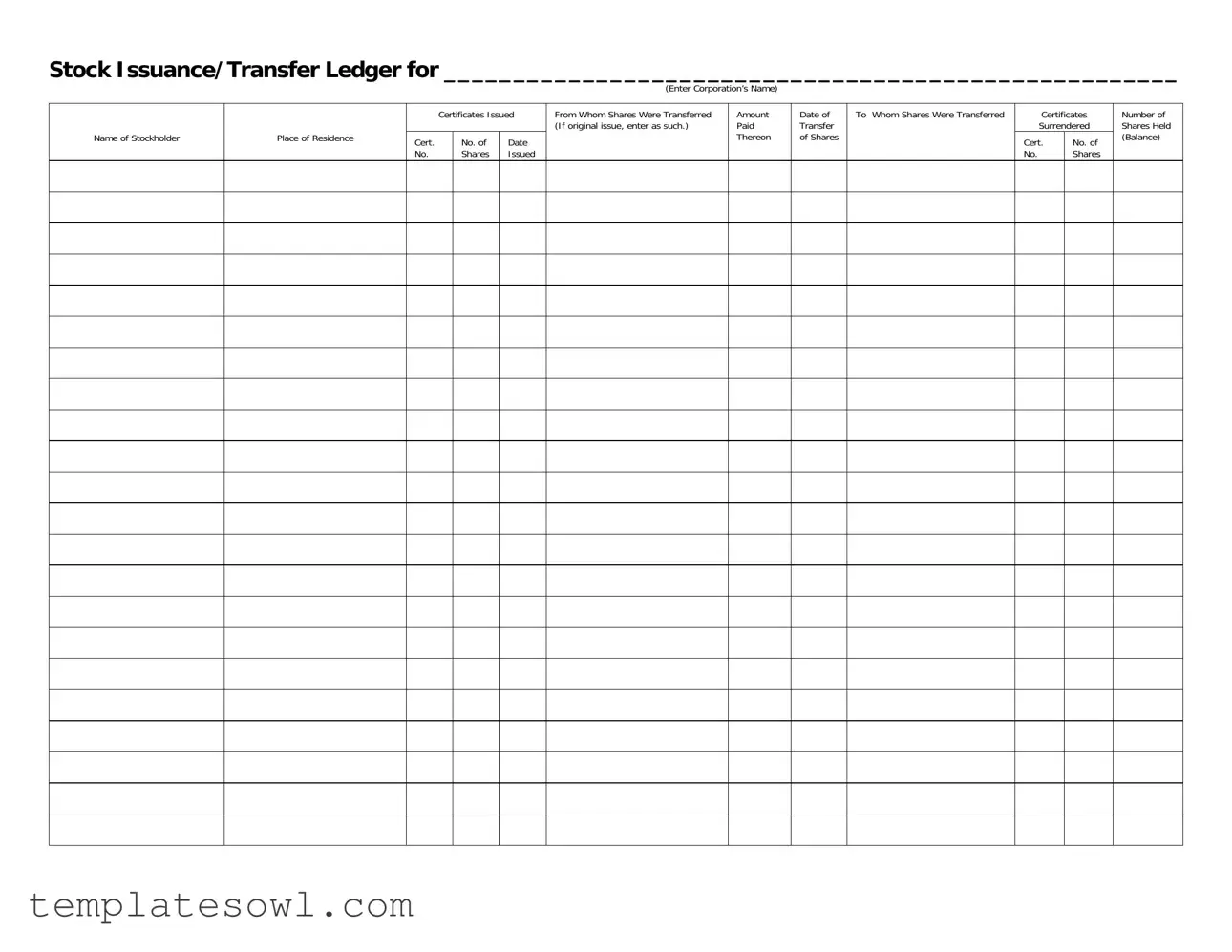What is the purpose of the Stock Transfer Ledger form?
The Stock Transfer Ledger form is used to record the issuance and transfer of stock within a corporation. This document provides a detailed account of who owns the shares, the number of shares issued, and any transfers that take place. It helps maintain accurate records for both the company and its shareholders.
How should I fill out the form?
To fill out the form, start by entering the corporation’s name at the top. Next, for each transaction, list the name of the stockholder and their place of residence. Then, record the certificate numbers, dates of issuance, details of the transferor, the amount paid for the shares, and the recipient's information. Make sure to include the certificates surrendered and the balance of shares held after the transaction.
Who needs to fill out the Stock Transfer Ledger form?
The form should be filled out by the corporation's secretary or another authorized individual responsible for maintaining stock records. This person must ensure all stock transfers are accurately documented to comply with regulations and maintain transparent shareholder records.
What kind of information is recorded on this form?
This form captures vital details such as the name of each stockholder, their residence, the certificate numbers, dates of issuance and transfer, the number of shares involved in transactions, and the amounts paid for the shares. Additionally, it includes information on certificated shares that have been surrendered and the remaining balance of shares held by the stockholder.
Is this form required by law?
While specific requirements can vary by state, it is generally advisable for corporations to maintain a Stock Transfer Ledger to track ownership accurately and comply with corporate governance standards. Keeping this form up-to-date can help prevent disputes and ensure proper record-keeping practices.
Can electronic records be used instead of a paper form?
Yes, electronic records can be used as long as they meet the state’s legal requirements for record-keeping. Ensure that the electronic system is secure and that the information is readily available for reference. Remember, the goal is to maintain accurate and thorough records of stock issuances and transfers.
What should be done with old or outdated records?
Old or outdated records should be archived in accordance with your corporation’s record retention policy. These records may still hold importance for historical reference or liability reasons. Ensure they are stored securely and can be retrieved easily if necessary.

